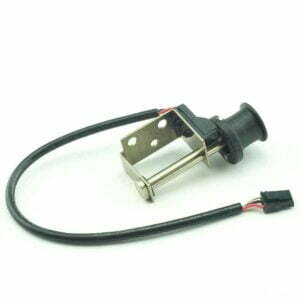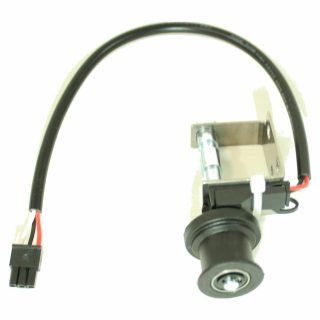How to Replace a Hall Sensor on a Riccar Vacuum Cleaner
How to Fix Riccar or Simplicity Vacuum Cleaner Brush Roll Not Spinning

The Hall Sensor in Riccar or Simplicity vacuum cleaners is a crucial component responsible for detecting the rotation of the brush roll. When the brush roll encounters an obstruction or stops spinning, the Hall Sensor plays a vital role in shutting off the machine to prevent damage. If you find that your vacuum is not detecting the brush roll motion accurately, it might be time to replace the Hall Sensor. In this detailed guide, we’ll walk you through the process of replacing the Hall Sensor in Riccar or Simplicity vacuum cleaners.
Models this article is relevant to include:
Riccar R10P, R17, Prima.TAP, R10SAND
Simplicity S10P, Wonder.TAP, S10SAND
Hall Sensor Replacement on Riccar and Simplicity Vacuums
- Replacement Hall Sensor (compatible with your vacuum model)
- Phillips screwdriver
- Flathead screwdriver
- Needle-nose pliers
- Work surface or clean area
Below you can find the hall sensor for the repair in question. This hall sensor is for Riccar and Simplicity vacuum cleaners.
If the parts listed are not correct for your model, click here to be directed to our schematics / parts list page where you can search your Riccar or Simplicity model to find the right parts that you need.
Below is a full video tutorial with our authorized Riccar, Simplicity, and CleanMax technician where he shows you how to complete this repair.
Fixing a Riccar or Simplicity Vacuum Hall Sensor Step-by-step Guide
Step 1: Prepare Your Work Area
Before starting the replacement process, ensure that your vacuum is unplugged from the power source. Place the vacuum on a clean and stable work surface with easy access to the underside.
Step 2: Locate the Brush Roll and Hall Sensor
Identify the brush roll and its corresponding Hall Sensor. The Hall Sensor is typically positioned near the brush roll, and it may be secured with screws or clips.
Step 3: Remove Screws Securing the Brush Roll Cover
Using a Phillips screwdriver, carefully remove the screws securing the brush roll cover. Set aside the screws in a small container to prevent misplacement.
Step 4: Access the Hall Sensor
Once the brush roll cover is removed, you will have clear access to the Hall Sensor. Examine its position and take note of how it is attached to the vacuum.
Step 5: Disconnect Wires (If Applicable)
In some models, the Hall Sensor may be connected to the vacuum’s wiring system. If so, use needle-nose pliers to carefully disconnect any wires. Take note of the wire colors or label them for reassembly.
Step 6: Remove the Old Hall Sensor
If the Hall Sensor is secured with screws or clips, use the appropriate tools to remove them. Gently lift or slide out the old Hall Sensor, being cautious not to damage any surrounding components.
Step 7: Install the Replacement Hall Sensor
Take the replacement Hall Sensor and align it with the mounting points on the vacuum. Secure it in place using the screws or clips you removed earlier.
Step 8: Reconnect Wires (If Applicable)
If you disconnected any wires, reconnect them to the corresponding terminals on the new Hall Sensor. Ensure a secure connection to maintain proper functionality.
Step 9: Reassemble the Vacuum
Place the brush roll cover back into position and secure it with the screws you set aside. Tighten the screws, but avoid overtightening to prevent damage.
Step 10: Test the Vacuum
Plug in your vacuum and turn it on to ensure that the replacement Hall Sensor is functioning correctly. Test the vacuum on both carpeted and non-carpeted surfaces to confirm that the brush roll engages and disengages as intended.
Conclusion:
Replacing the Hall Sensor in your Riccar or Simplicity vacuum is a task that can help restore the accurate detection of brush roll motion, ensuring the vacuum operates effectively. Regular maintenance and prompt replacement of faulty components contribute to the longevity and reliable performance of your vacuum cleaner. If you encounter any challenges during the process or are unsure about any step, consult your vacuum’s user manual or seek professional assistance. Taking care of your vacuum through regular inspections and necessary repairs will keep it operating smoothly for years to come.


